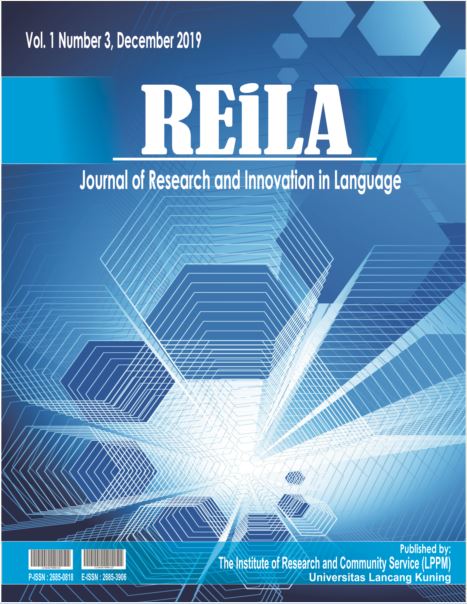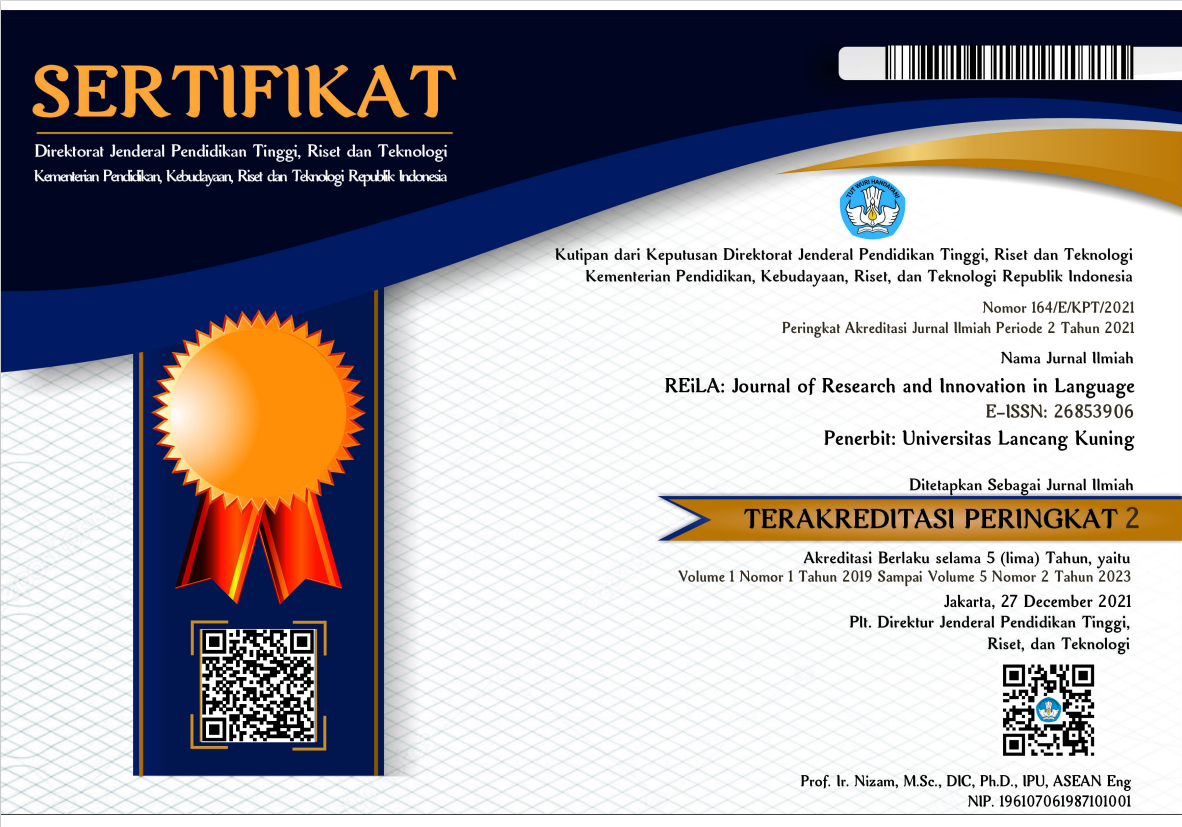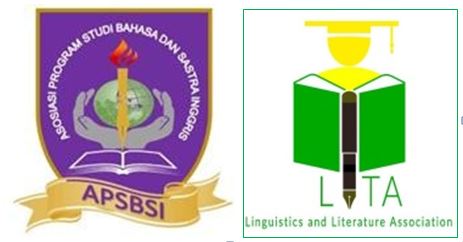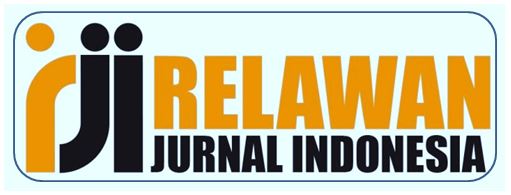Re-Thinking Bloomfield’s Concepts of Meaning: Do Meaning Really as a Weak Point in Language Study?
Abstract
This paper aims to describe the concepts of meaning in Bloomfield’s Theory. The methodology used to gain data in this paper is a qualitative descriptive using documentation method. Sources of data consists of words, sentences, and discourses found in the book Language by Bloomfield published by Henry Holt in New York in 1933. This research collects its data in a descriptive manner by reducing data, presentation data then drawing conclusions. The results of the analysis of this study indicate that Bloomfield underlines that meaning as a weak point in language study and believed that it might well be all expressed in behaviourist terms. Bloomfield also stressed the context of the situation was a very important level of linguistic analysis aside syntax, morphology, phonology, and phonetics, all of which support to linguistic meaning. This present study also found that Bloomfield considered words to be ambiguous notions both in everyday speech and in linguistics.
Downloads
References
Belyi, Vilen Viktorovitch. (1999). Some Facts about Weiss’s Influence on Bloomfield. In John Fought (Ed.), Leonard Bloomfield: Critical Assessment of Leading Linguists Vol. 2 (pp. 115-118). London: Routledge.
Bloomfield, L. (1930). Linguistics as a Science. Studies in Philosophy, 27(4), 553-557.
Bloomfield, L. (1933). Language. Beijing: Foreign Language Teaching and Research Press.
Bloomfield, L. (1935). Linguistic Aspects of Science. Philosophy of Science, 2(4), 499-517.
Bloomfield, L. (1936). Language or Ideas? Language, 12(2), 89-95.
Bloomfield, L. (1939). Linguistic Aspects of Science. International Encyclopedia of Unified Science 1 (4). Chicago: University of Chicago Press.
Bloomfield, L. (1943). Meaning. Monatshefte fur Deutschen Unterricht, 35, 101-106.
Bloomfield, L. (1949). Linguistic aspects of science. International encyclopedia of united science I /4. Chicago: University of Chicago Press.
De Beaugrande, R. (1991). Linguistic theory : the discourse of fundamental works. London: Group ltd.
Firth, J. R. (1957a). Papers in linguistics 1934 – 1951. London: OUP.
Hamuddin, B. (2016). Using Content Analysis (CA) in Seeking the Opportunities for Alumni of English Department in Newspapers. ELT-Lectura, 3(1).
Lexy,, J.Moleong. (2005). Metodologi Penelitian Kualitatif. Bandung : PT. Remaja Rodakarya.
Mhute, I. et al. 2014. Introduction to General Linguistics II. Harare: ZOU
Moleong, J.L. (2000). Metodologi Penelitian Kualitatif. Bandung : PT. Remaja Rodakarya.
Mutarcim. Veysalli, F. Y. (2013). The bases of Linguistics. Studia Philologica VI. Baku: Mutarjim.
Syal, P. and Jindal, D.V . An Introduction to Linguistics: Language, Grammar and Semantics. New Delhi: Prentice Hall
Ullman, S. (1962). Semantics: an introduction to the study of meaning. Oxford: Basil Blackwell
Veysalli, F. Y. (2008). The bases of Structural linguistics II. Studia Philologica II. Baku:
Wang Yuanxin. (2006). Theories of Language and Methodologies of Linguistics. Beijing: Educational Science Publishing House.
Xiong Bin. (2007). American Structural Linguistics and Modern Chinese Grammar Research. Wuhan: Central China Normal University Press.
Yin, Xiujuan. (2008). Probe into Bloomfield’s “Meaning”. Journal of Anhui University of Technology (Social Sciences), 25(4): 84-85, 110.
Fromkin, V., Rodman, R., & Hyams, N. (2018). An introduction to language. Cengage Learning.
Andrews, M., Frank, S., & Vigliocco, G. (2014). Reconciling embodied and distributional accounts of meaning in language. Topics in cognitive science, 6(3), 359-370.
Nelson, K. (2014). Concepts and meaning in language development. In Biological and behavioral determinants of language development (pp. 99-126). Psychology Press.










